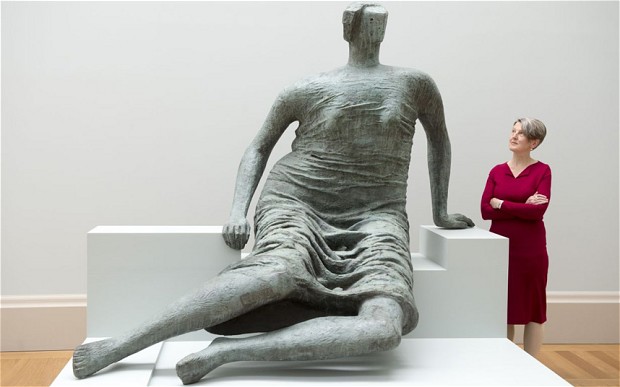Last week, Tate Britain was one of six museums across the UK to be nominated for the Art Fund’s Museum of the Year award, an annual prize in which the winner receives the not inconsiderable sum of £100,000. A couple of weeks earlier, Waldemar Januszczak, the Sunday Times’s ‘cor blimey’ art critic (don’t get me wrong, he has a winning shoot-from-the-hip style) was calling for the head of Penelope Curtis, Tate Britain’s director since 2010.
Despite approving of the chronological rehang of the permanent collection which she oversaw last year – in fact, he proclaimed it a ‘miracle’ – Januszczak still insisted Curtis must go. He gave his reasons: she puts on rubbish shows and under her leadership visitor numbers dropped significantly (by 10 per cent last year). However, he didn’t mention that most of Tate Britain’s galleries had been shut for major rebuilding and refurbishment (which is where the splendid rehang came in and the later unveiling of Tate Britain’s showpiece spiral stairwell). Despite all this, he nonetheless made some valid points.
Now, I’m not calling for Curtis’s head, but there is no doubt there are problems at Tate Britain. And this includes misconceived curatorial thinking. Sadly, Curtis appears fixated by intellectually incoherent, ‘trans-historical’ surveys, the worst of which had to be last year’s Art under Attack, in which the curators got very confused between literal destruction – the Reformation; individuals taking an axe to a work in a gallery – and the metaphorical language of ‘destruction’ used by artists to create art in the latter half of the 20th century.
Forgive my recourse to Godwin’s law, but this really is like trying to compare James Joyce’s ‘destruction’ of form with fascist book-burning. One is clearly an intellectual and artistic endeavour, while the other a suppression of intellectual and artistic endeavour. The distinction became somewhat blurred in the exhibition.
What’s more, the curators appeared to approve of the destruction – that is, the literal destruction – of some art for causes which met with their approval. So it appeared to be OK for Mary Richardson to have slashed Velázquez’s Rokeby Venus because she was a suffragette, but it would definitely not have been OK for her to do so in her incarnation as a fascist Black Shirt just a few years later.
I’m not saying Tate Britain doesn’t showcase well-deserved contemporary British art – it does – but in some deeply rooted, subconscious sense it appears to have lost faith in British art. And this expresses itself in regular vanity projects for curators in which they shoehorn artists into shows with half-arsed agendas. The current Ruin Lust is another example. I know it’s terribly fashionable for curators to use the exhibition space as a playground for ideas, but I do wish they would ensure their ideas made connections that were illuminating rather than baffling.
Perhaps the deeper problem with Tate Britain is a structural one, and goes back to the creation of the two London Tate galleries with the arrival of Tate Modern. This two-museum model has inevitably created a two-tier system – a first and a second division of British artist – in which British artists are packaged as either ‘British-British’ (provincial British?) or ‘international-British’.
The two-tier system was kicked off in the Olympic year when Damien Hirst was given a Tate Modern retrospective. His natural home should of course have been Tate Britain but as a high-grossing artist whose celebrity dazzles beyond the art world he was honoured at the venue that has greater footfall and a sexier image (and don’t forget, this is the artist who more or less bought his way into the Wallace Collection with some of the most amateurish paintings you’ll ever see).
Previously, there had been no question of other high-profile artists such as Francis Bacon or Howard Hodgkin or Bridget Riley receiving a Tate Modern survey. They were all shown at Tate Britain, just like the international sculptor Richard Deacon is with his current survey.
Tate has created a rod for its own back. At some point the two-tier model will prove untenable. In which venue should we expect to find a future survey of Sarah Lucas, who will represent Britain at the Venice Biennale next year? Or the sculptor Barbara Hepworth? Is Lucas less international-British than Hirst, and hence less important? Was Richard Hamilton – who you can still catch at Tate Modern – more international-British than Hepworth, or Bacon?
Meanwhile, non-British artists can win the Turner Prize for British art (this year it was won by French artist Laure Prouvost and in the past it’s been won by two Germans). I think this is fine, but I also believe there’s an inherent irony here.
Whether they get their hands on that £100,000 or not, Tate Britain could do with a serious rethink.






Comments